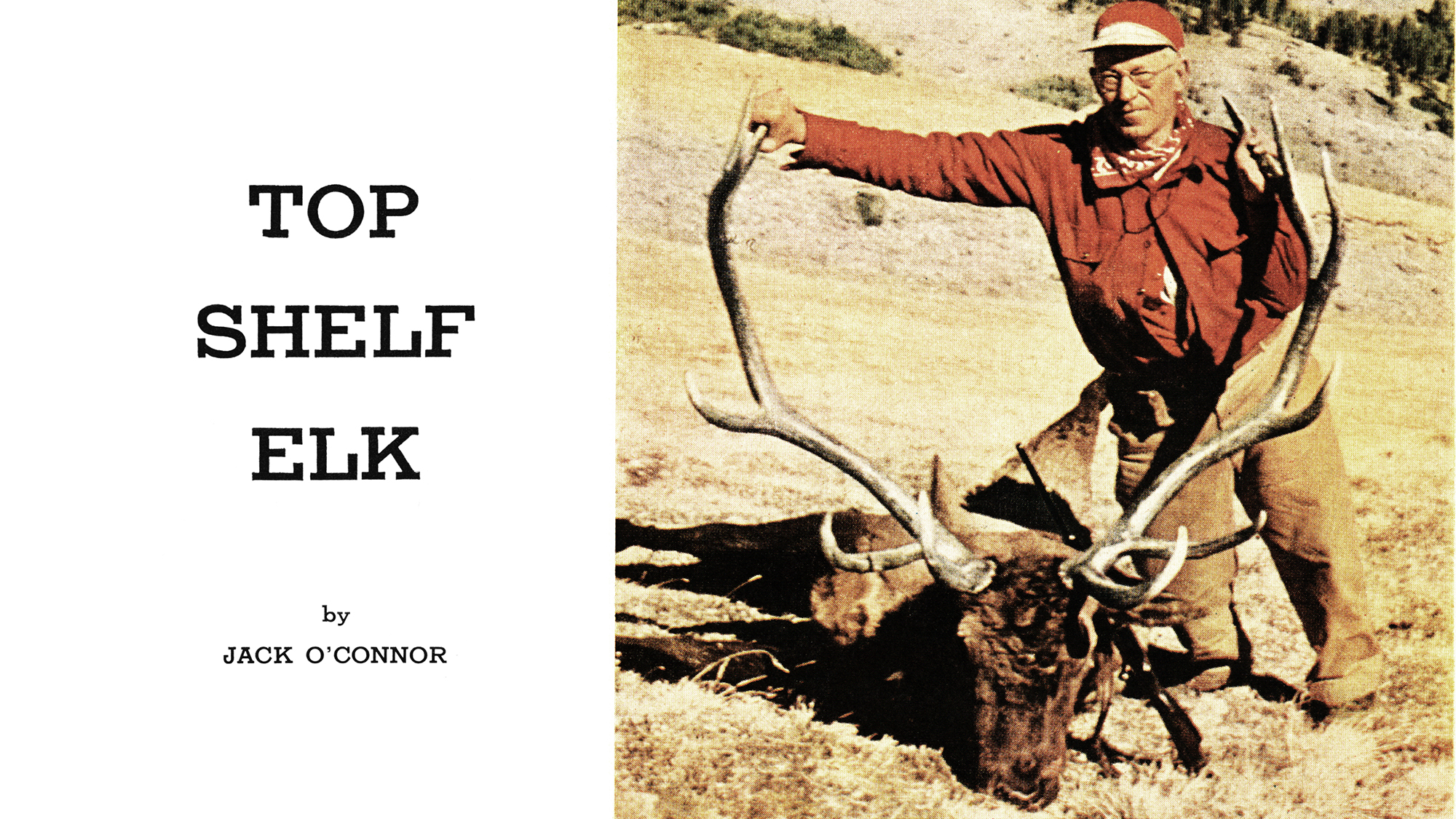DURING THE MIDDLE of the night something awakened me, and for a moment I thought I was back in Tanganyika listening to the dawn roaring of a pride of lions. But in seconds my consciousness spun me back around the world.
The interlaced branches of the trees above were not the thorn or fever trees of Africa, but American fir and spruce. The chattering brook and clean, resinous scent of the frosty mountain air told me I was in Wyoming. The hungry-lion noise was only the snoring of my amigo Fred Huntington, whose thunderous slumbering earlier in the night had driven me to leave our tent and seek sleep under the flaming early-October brilliance of those mountain stars.
Fred, who owns a gun and die shop in Oroville, Calif., weighs 265 pounds and is a prodigious eater, as if I had to say. He’s also a gun nut and a nice guy.
Now that his snores were softened by distance I could hear the wilderness around me. The brook talked to itself gently as it danced over its bed of stones and the softest of gentle breezes sighed through the fir and spruce. Downstream a lone coyote burst into a sudden ecstasy of shrill yips and barks, and on the other side of camp a hobbled horse groaned wearily between mouthfuls of grass.
Then the elk opened up. First a little spike bull gave a whistle so thin and delicate that it might have been made by a bird. Then an old-timer hoarse and exigent with years bugled like a braying donkey. For a few minutes bulls were bugling all through that lofty pine-clad canyon. Quickly I learned to distinguish the bugles of individual bulls. One of them, a fellow who sounded as if he were not more than 300 yards up the side of the canyon, made a noise like a burlesque comedian who’s been jabbed with a pin— ueooow. As I listened, I could almost imagine him grabbing the seat of his pants and leaping into the air while the audience roared with laughter. I’ve heard elk bugle in many areas — on Arizona’s Mogollon Plateau, in Wyoming’s Jackson Hole, in Idaho’s Selway and Salmon River countries; but never had I heard anything like the wilderness symphony in that frosty, star-spangled night in the Wyoming Rockies outside of Cody.
The elk were still bugling when I dropped off to sleep again. When I awakened the camp was gray with dawn and Les Bowman, our outfitter, was rattling the stove as he built a fire in the tent where Fred still slept.
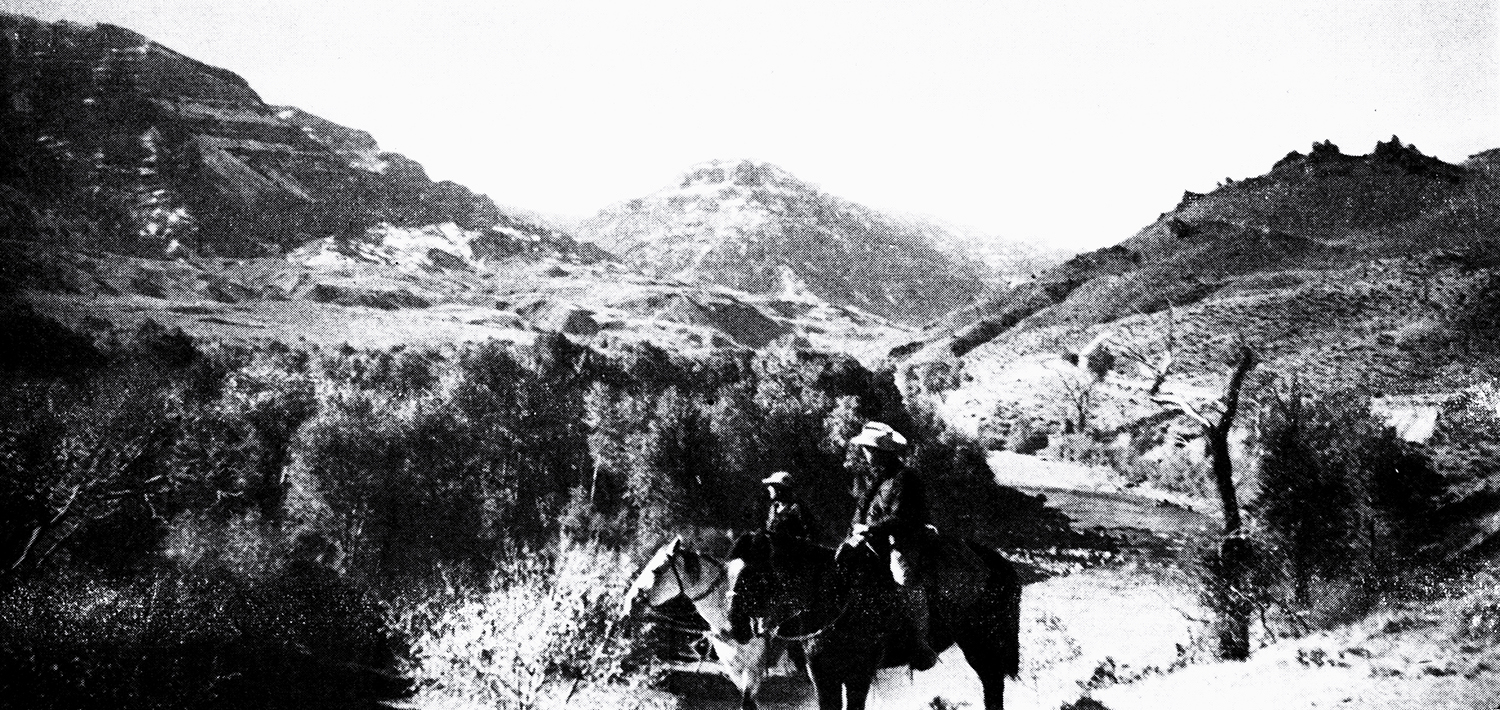
After a late start the day before, Les, Fred, and I had ridden into this camp at Cut Coulee from Les’s ranch down on the South Fork of the Shoshone, arriving in time to cook a hasty meal before we piled into bed.
“There’s a spot I want you characters to see,” Les had told me — “a series of basins above timberline, about 12,000 feet. It’s been pretty warm and the elk have been hanging out in the timber, but now that it’s turned cool they may have gone up on the ridges again. If they have, we’ll really see some elk; if they haven’t we’ll have wasted a few days. At least it’s worth a gamble.”
The area off the South Fork has always been great elk country — and good bear, sheep, and grizzly country too. Half a century ago, Theodore Roosevelt hunted there with Buffalo Bill Cody, for whom Cody, Wyo., was named. The site of their base camp lay about two miles from where we spent the night.
Next morning we undertook to climb to those basins. They were about 3,500 feet above us over a rough, infrequently used, and almost vertical trail. As our heaving horses labored up, the air grew thinner and cooler and the trees more stunted. Finally our little cavalcade crawled laboriously over the last rockslide, then scrambled up a narrow trail by a big bluff. We were right at timberline now, at an elevation where that beautiful high-altitude tree, the whitebark pine, grows in open groves that look like gnarled and neglected orchards.
In the Wyoming Rockies timberline is about 11,000 feet above sea level and the ridge to which we struggled was a bit above that. We dropped down to a dark draw, then on and up to a grassy ridge. Before us lay an enormous canyon with darkly timbered draws and long, All narrow ridges golden brown with frost-cured grass. around lay more bare ridges and beyond them jagged snow-capped peaks.
As we got off our heaving horses to glass the country, we heard below us the thin, piping whistle of a young bull elk, and while we watched we saw a long-necked, tan-and-brown cow walk slowly across the open grass from one little tongue of purple timber to the next.
The north wind was clean and cold and frosty, and it drove the cold right through my down jacket, through my wool shirt, through my longhandled underwear. It made my ears sting and my eyes water.
“I’ll tell you what,” Les said presently to Fred. “You stay up here on the ridge and watch. It’s about time for the elk to start coming out of the timber to graze, and you may see a nice one. Jack and I will look into some of the high basins farther on.”
And so we left Fred there on the ridge. We had not ridden far when Les pointed. On a grassy hillside just above a patch of old snow I could see four elk. All looked like cows, but when I put my 9 x 35 Bausch & Lomb binoculars on them I could see that one was a spike bull. To their left was a jagged, rocky outcrop which would bring us within 200 yards of them. We decided to climb it and look them over in case there was a good bull we hadn’t seen. But there wasn’t, so we left them untroubled.
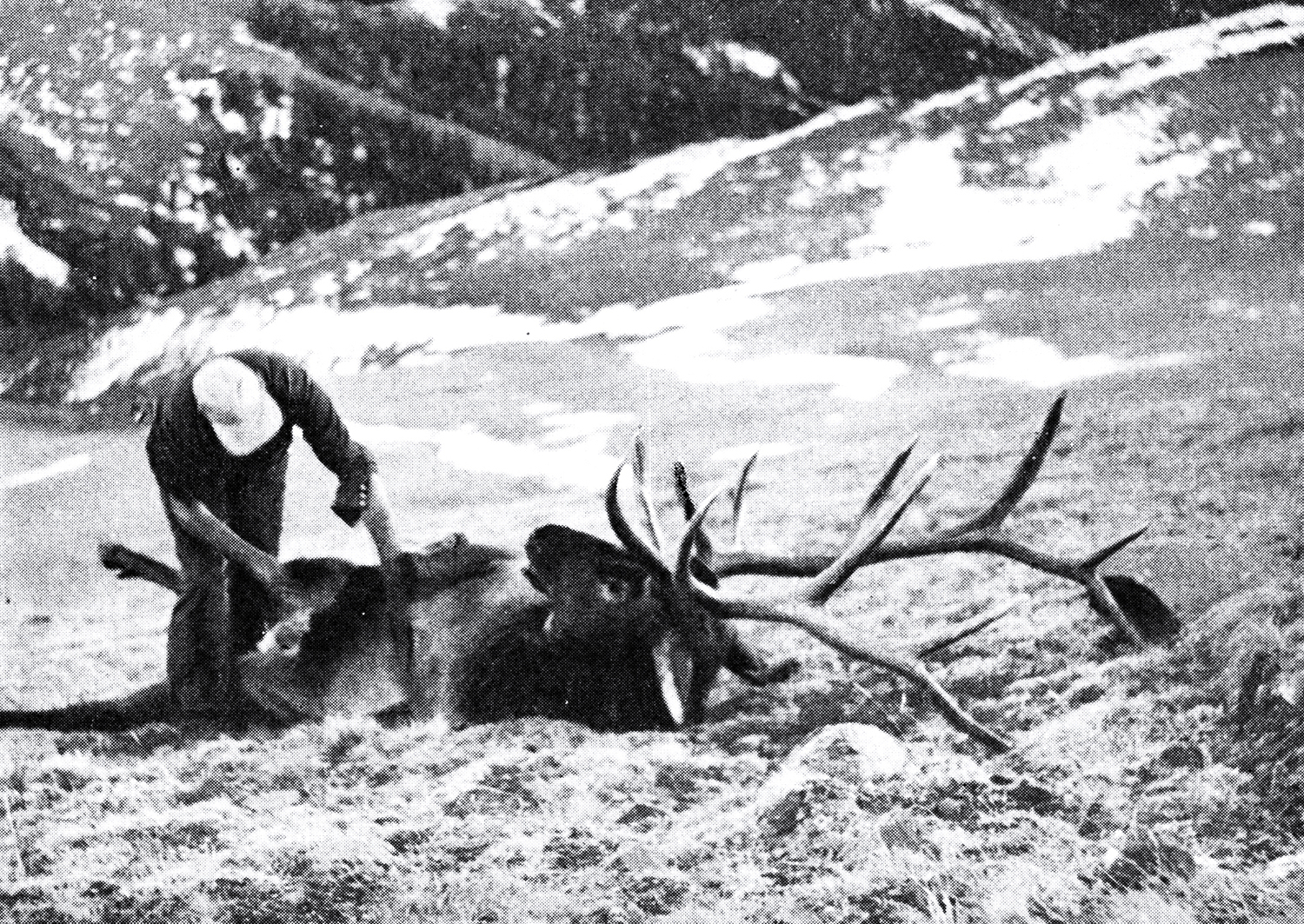
Beyond us was a peak rising from another ridge. Right then we must have been at least 12,000 feet above sea level and in a patch of the arctic there in Wyoming_snow and rockslides and dead grass and lichens. Except that the coun-try was dryer, even dusty in some spots, it looked much like the big basins in northern British Columbia where I had many times hunted the great mountain caribou.
My sins and my years weighed heavily upon me as I labored in the thin air up this rocky ridge to look into the basin beyond, but when we got there the sight was worth our labors. In this mile-wide basin above timberline were about 50 elk — cows, calves, young bulls, great patriarchs with brown, massive, six-point antlers tipped with ivory. Since it was in the middle of the rut, each bull had his own harem. Apparently the question of which cow belonged to whom had been settled during the bloody, noisy battles of September, for now they mingled peacefully. Some of the big bulls were lying down. Others were grazing. Even the younger bulls that had not collected cows seemed content simply to rest or eat.
Hungrily I watched the big herd bulls as I lay there on my belly in the shale and slide rock. I could see four six-pointers in the basin. Any would make a fine trophy, but two of the heads were more massive, had longer points.
Les punched me as I was looking them over.
“Let’s go back around this point,” he whispered, “and come out on the ridge over there. We’ll still be a long way from the best bulls, but we’ll be a couple of hundred yards closer than we are now.”
We edged down the slide and got aboard our weary horses, rode around the peak, and tied them to stones below the point we had planned to climb. Then we ran into more elk. We’d just left the horses when we saw a cow in a basin to our right that had been hidden until then. Cautiously we crawled around the hillside until we could look right into the basin. There we saw at least 15 other elk, among them a big six-pointer.
Both of us glassed him for a moment, then Les turned to me. “What do you think?” he asked.
“I’d like to get a closer look.”
“All right, get as close as you want and glass him good. You probably know as much about elk heads as I do. I might want to get one of the big fellows in the first basin for myself, so I’ll wait up on top until I hear you shoot. Then I’ll open up.”
Except for a few boulders on the hillside, there was no cover, so I left my camera and my binocular case on the grass. Then I strapped my rifle over my back, took my binoculars in hand, and crawled like a snake toward the little herd. Every time an elk looked my way I froze; when they all had their heads down I inched forward. Now and then I glassed the bull again.
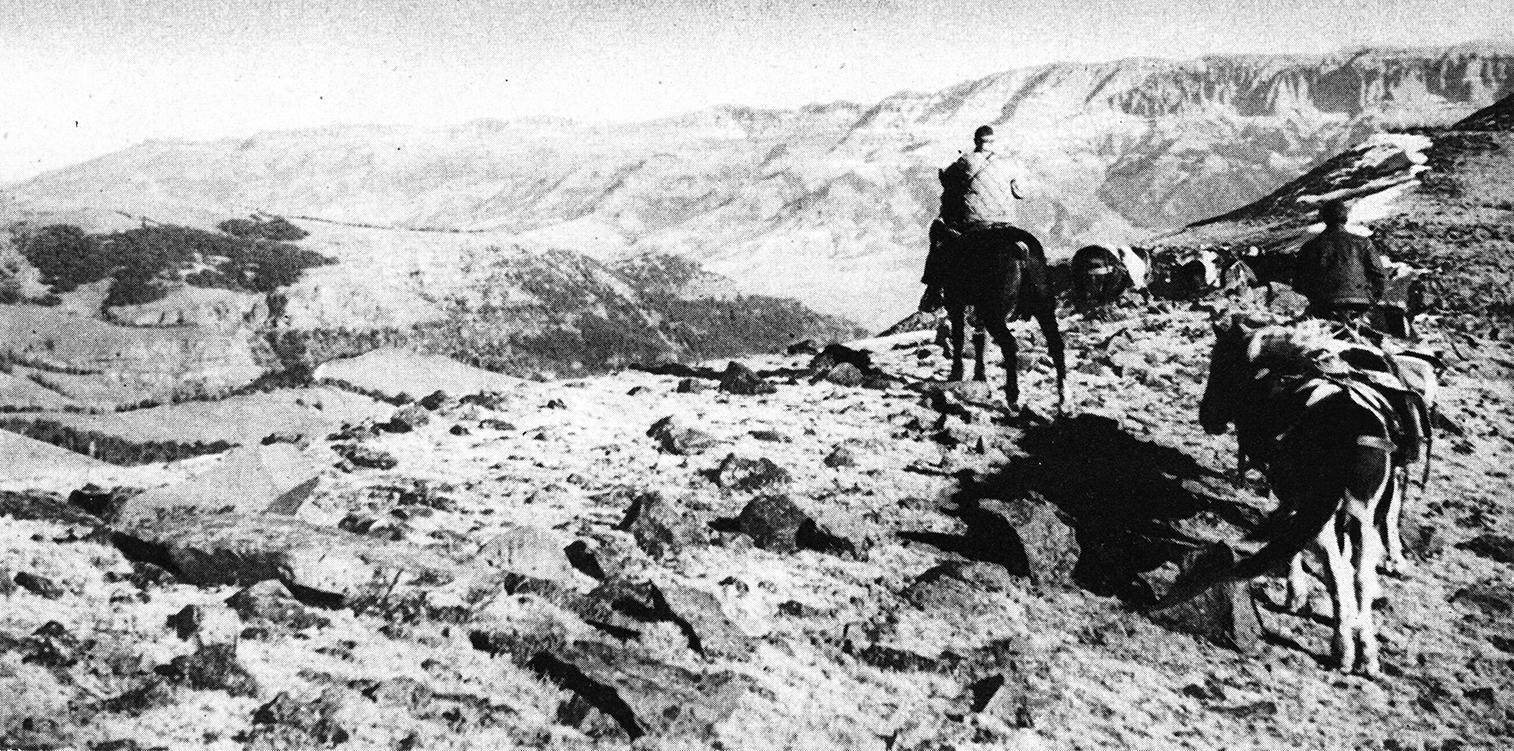
WHEN I GOT within 300 yards of him, I began to have my doubts about shooting him. His antlers had fine length, but the points were short and the head as a whole was light. Then, as if to help me get another look, he suddenly left the herd and trotted 100 yards or so toward me, then stopped by a scattered patch of the low evergreen shrubs the Canadians call shin-tangle. There he turned broadside and began to graze. I could tell then that I didn’t want him. So I snaked my way back for several hundred yards until I could get out of sight behind the ridge. As I started to climb up to meet Les I saw him coming down.
“What’s the matter?” he asked. “Afraid that bull will eat you if you shoot at him?”
“More I saw of his head, the less I liked it,” I told him. “Antlers too thin.”
When we got on top I found that the first elk we had seen were still undisturbed. I walked over to where I could look back at the basin I had just left. The thin-antlered bull was still grazing by the patch of shin-tangle. The wind continued bitter and chill. Above us a great eagle flapped his wings ponderously against the invisible air current in the polished blue sky, labored hard, got nowhere.
Keeping pretty well concealed behind the rocks of our little peak, I dropped around to the left to find out if there were any elk I hadn’t seen from below. There were behind a point that had hidden them from me when I was making the stalk. Half a dozen or so were cows, but with them was the finest bull I ever laid eyes on. I put the glass on him, and the more I looked the nicer he seemed. His massive six-point antlers were deep brown, tipped with ivory, wide of spread, and many-pointed.
“See that guy below?” I said to Les. “I take!”
The great bull was about 300 yards away and below me, quartering slightly away. Since the elk were not alarmed and I had lots of time, I sat down, put the loop of the sling high on my left arm, got into a perfectly easy and comfortable sitting position. With my left hand hard against the front swivel, I felt solid as a rock.
I was using a .270, an altered Model 70 Winchester with barrel ground down and shortened to 22 inches. It was fitted with a Stith 4X Bear Cub scope on Tilden mount and had been restocked by Al Biesen in fine French walnut. All in all, it’s my notion of an ideal rifle for mountain hunting. It weighs only eight pounds with scope and sling and will shoot any good bullet into a one-inch circle at 100 yards.
The crosshairs settled down black and sharp against the bull’s broad, tan back at such an angle that the bullet would drive down through the lungs and have a chance to break the far shoulder.
Then the little .270 went off. The handloaded Speer 150-grain 150-grain bullet, pushed out at around 3,000 feet per second, plunked into the elk, knocking off a clump of hair right where the crosshairs had rested. The bull staggered, and as I worked the bolt to get off another shot Les yelled, “He’s going down.”
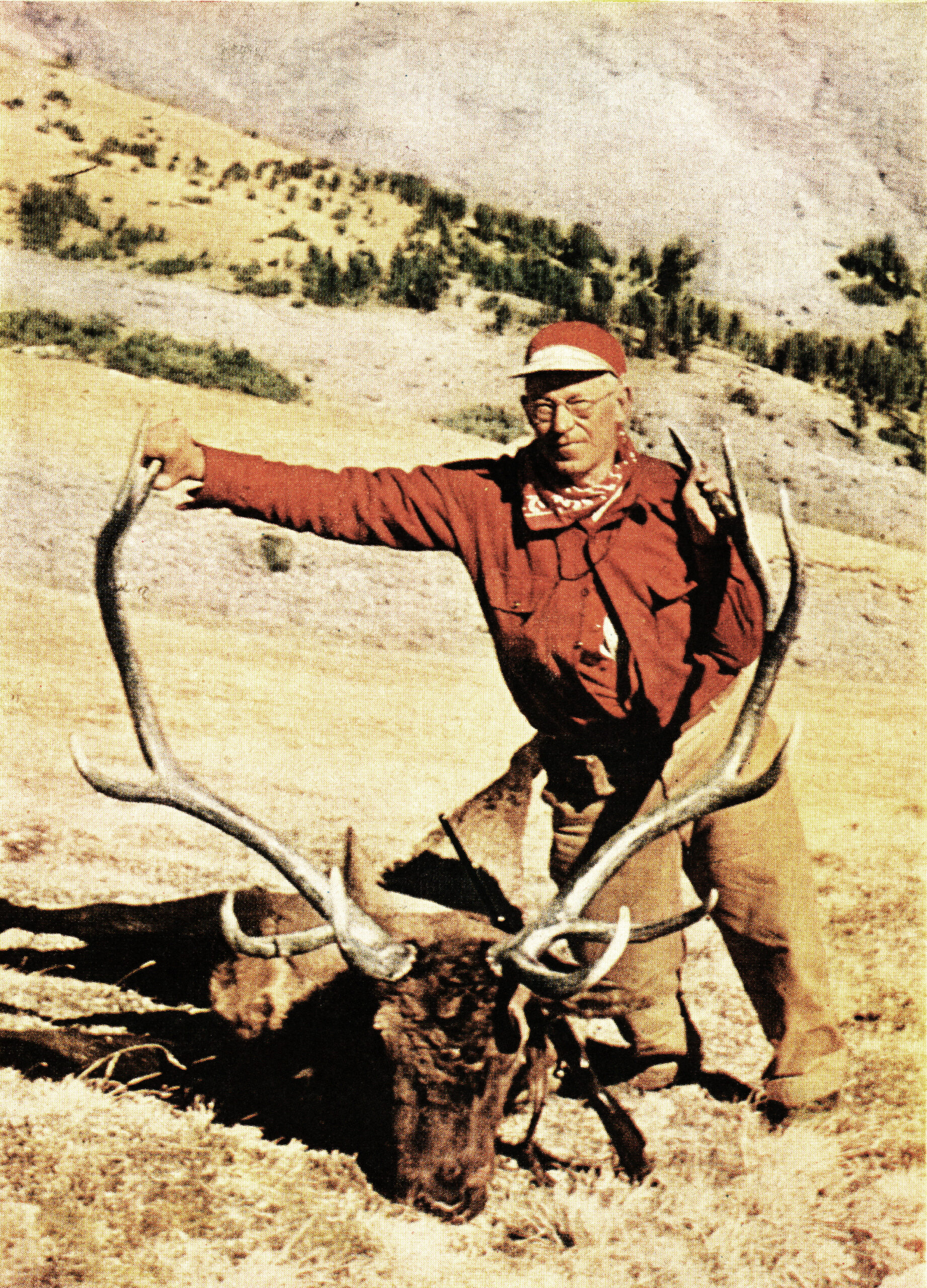
Slowly the bull slumped to his knees. Then his great antlered head dropped to the ground, and he rolled over.
He was a grand elk, that fellow, with a head well up in the record class. As Les and I worked to dress him out the sun was plunging rapidly. Its slanting rays still fell like a spotlight on our peak, but below us we could see the shadows creeping up out of the canyons, spreading up the mountainsides. Remembering the rugged trail up which we’d come, I was anxious to get started down and so was Les. We almost ran to the spot where we had left our horses, and we trotted them over to the saddle where Fred, still elkless, waited.
The trip we three made down that trail is something I’ll not soon forget. By the time we dropped off the ridge it was dark, and when we hit the timber it was so black that most of the time I couldn’t see Fred’s light-gray horse a few feet in front of me. For a while I tried to walk and lead my horse. I stumbled over boulders, got off the trail, fell on my face, and once strayed within inches of a precipice with the rush and roar of a creek directly below me. I decided then to get back on my fine horse, Big Boy, and trust his cat’s eyes and stout legs to get me to camp. Many times I got whacked by limbs, and a sharp twig cut my nose. Part of the time Les used a flashlight with expiring batteries, and once it showed that we were off the trail and trying to scramble down a cliff a couple of hundred feet high.
Fred fell off his horse, grabbed his .35 Magnum, and came charging up to the firing line like a Patton tank. I expected the bull to bolt, but instead he stopped dead still, as though he’d never seen anything half so interesting.
Finally, though, we hit a familiar grassy flat, then the trail, and presently we were crossing the Cut Coulee bridge and could see the palely luminescent tents of our camp.
Since we’d found the basins full of elk, Les and I felt very bad about having left Fred up on the saddle. He’d seen a good many elk while he waited, he told us, and a couple of very respectable bulls he could have shot. However, they were far below in the timber and killing any of them would have delayed us and made us too late in getting off the mountain.
We worried a little about poor old Fred as we started up to skin and quarter my bull and to bring out the meat. We couldn’t have chased all the elk off the mountain, we thought, and we hoped Fred could get one.
He did — and how.
We were winding through the timber not over a mile from camp when a mule-deer buck popped up on a knoll. Fred got off his horse, gently took his .35 Magnum out of the scabbard, and popped the buck. It ran 50 or 60 yards and piled up.
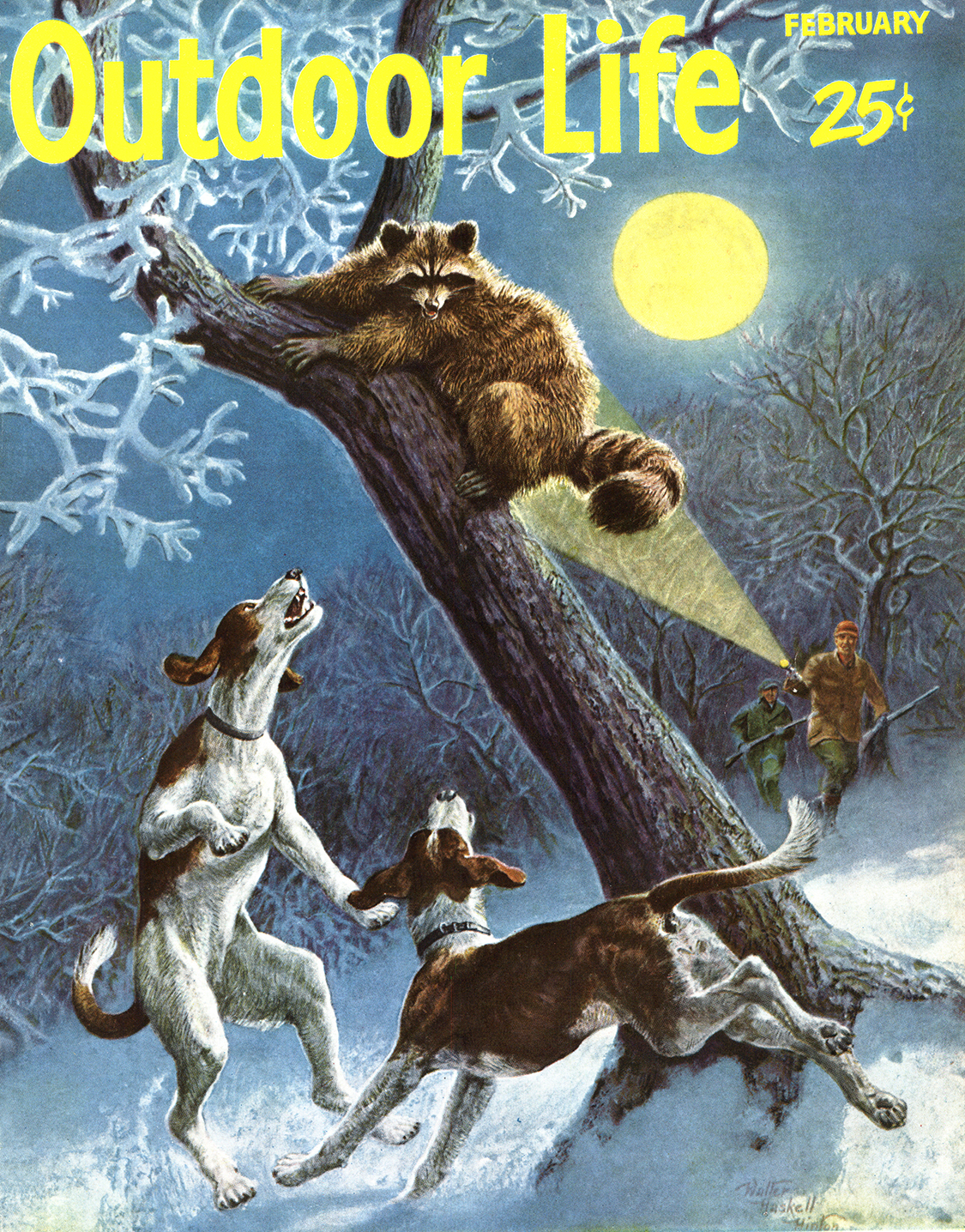
We took the insides out of this dull-witted buck and laid the carcass across a log. We’d pick him up on our way back. But before we had ridden a quarter of a mile, Les and I, who were in the lead, looked up to see a big bull elk, sleek in his pelage of tan and brown. With his great, ivory-tipped, six-point antlers laid along his back, he came trotting out of a clump of trees to our right. He didn’t seem frightened, only a bit annoyed and curious.
I turned toward Fred, who was riding 30 yards behind me. “Elk!” I whispered hoarsely. “Big bull.”
Fred fell off his horse, grabbed his .35 Magnum, and came charging up to the firing line like a Patton tank. I expected the bull to bolt, but instead he stopped dead still, as though he’d never seen anything half so interesting, and studied Les and me, the packhorse, and Fred laboring through the timber.
Fred angled off by the left flank so he wouldn’t shoot the horses’ ears off, lifted his .35, and popped that accommodating old bull right through the neck. That was that — a buck deer and a bull elk in two shots within 400 yards of each other.
When at last we got up in those great empty basins more than two miles above the sea, we must have seen 30 or 40 more elk, some of them big bulls like those we’d shot. When they were hunting that country 50 years ago, Teddy Roosevelt and Buffalo Bill knew what they were doing.
This story, “Top Shelf Elk,” originally ran in the February 1955 issue.
